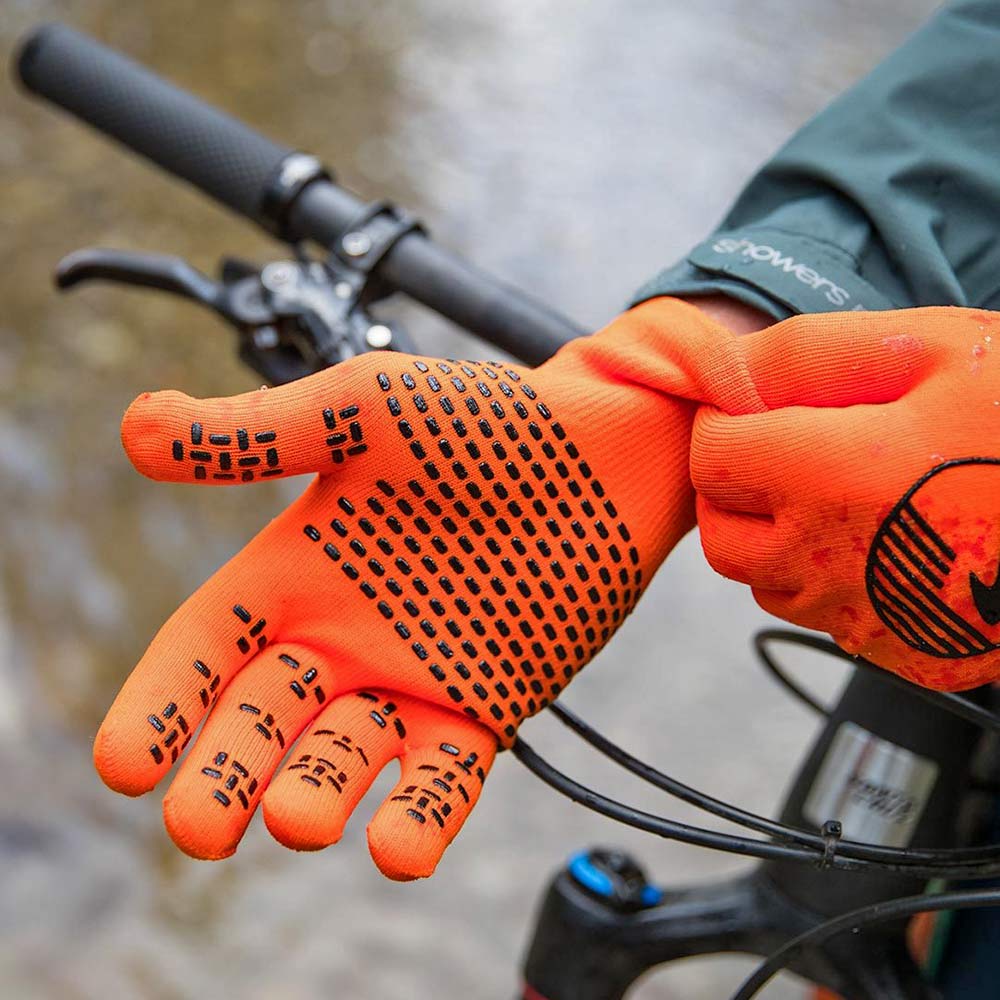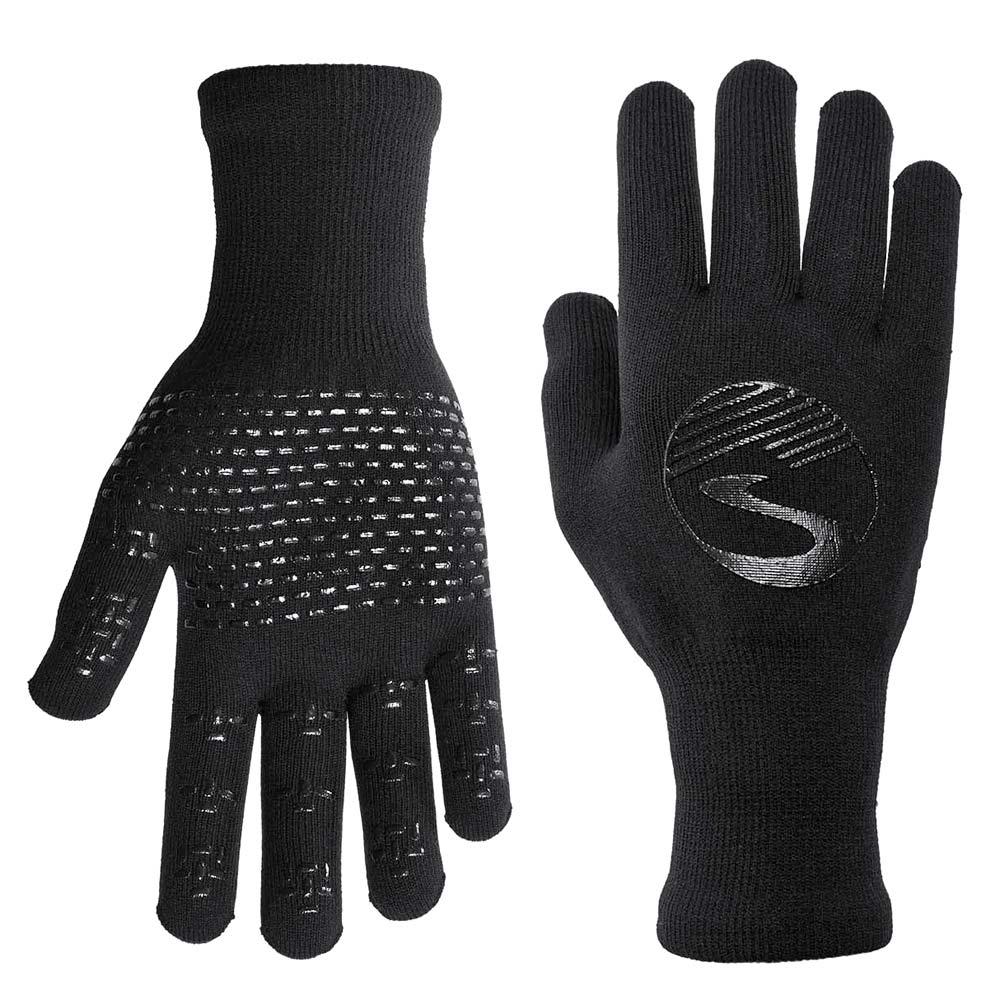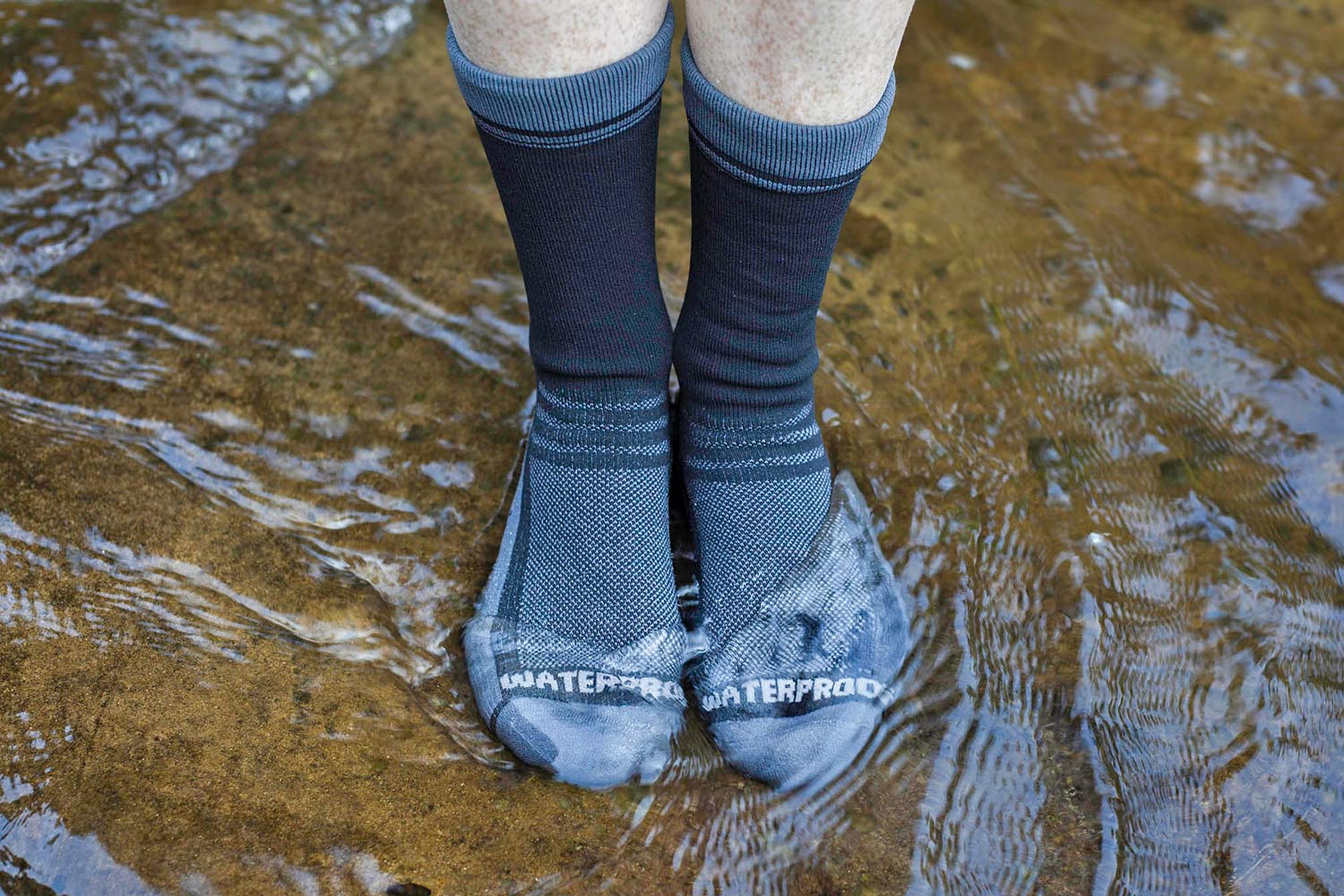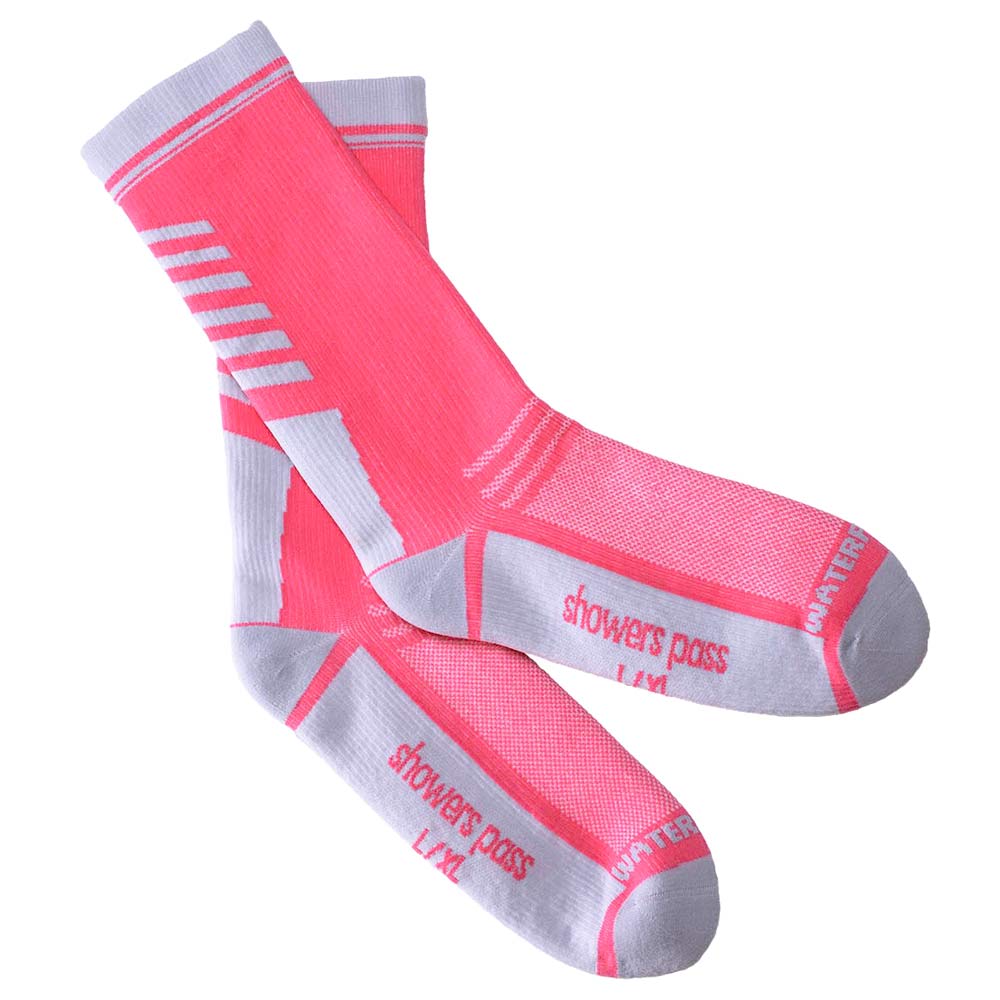The new Crosspoint Lightweight gloves & socks from Showers Pass promise the feel of a standard pair of knit gloves, while packing a fully waterproof, breathable membrane in between the inner and outer layers. Really the only way to make it through the wet autumn and winter weather on the bike is to make sure that fingers and toes are protected from the elements, while keeping enough freedom of movement to maintain proper circulation.
While many multi-layer waterproof gloves suffer from either excessive bulk or movement between the layers, the Crosspoint Lightweights claim to overcome both issues. They do that with a three layer construction, permanently bonded together.
From the inside the Crosspoint Lightweights use a Coolmax FX liner that wicks moisture away from hands & feet. Next a seamless Artex waterproof/breathable membrane is bonded on. Then on the outside the Crosspoint Lightweights bond on another layer – a lighter synthetic knit (9% lighter than their previous Crosspoint) that retains wear resistance but feels more like a normal knit glove/sock.
Crosspoint Lightweight waterproof breathable knit gloves
Then on top of that, the gloves get a dense silicone gripper array on the palms and fingers to provide grip while holding onto wet objects (like wet bartape or grips) for extended periods. Both new gloves & socks balance fully waterproof/breathable performance, with a fit & flexibility that hasn’t really existed in this type of product before.
The Crosspoint Lightweight gloves sell for $45 and come in three sizes – S/M, M/L & L/XL. They are available in standard black or two more hi-vis color options – Neon Green & Safety Orange.
Crosspoint Lightweight waterproof breathable knit socks
The Crosspoint Lightweight socks get reinforced toes & heel sections for added durability and add a fourth size for better fit options – S/M, M/L, L/XL & XXL.
They retail for $34 in standard solid colors – black, gray, neon yellow & pink – or for $36 in camouflage colors – forest & gray camo.





